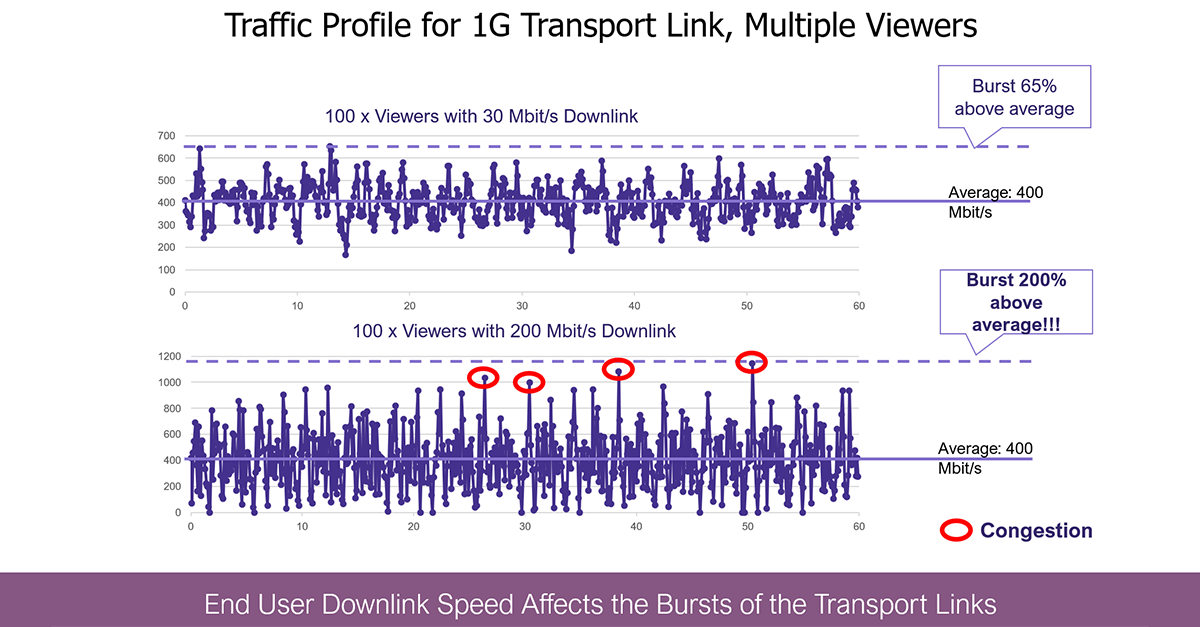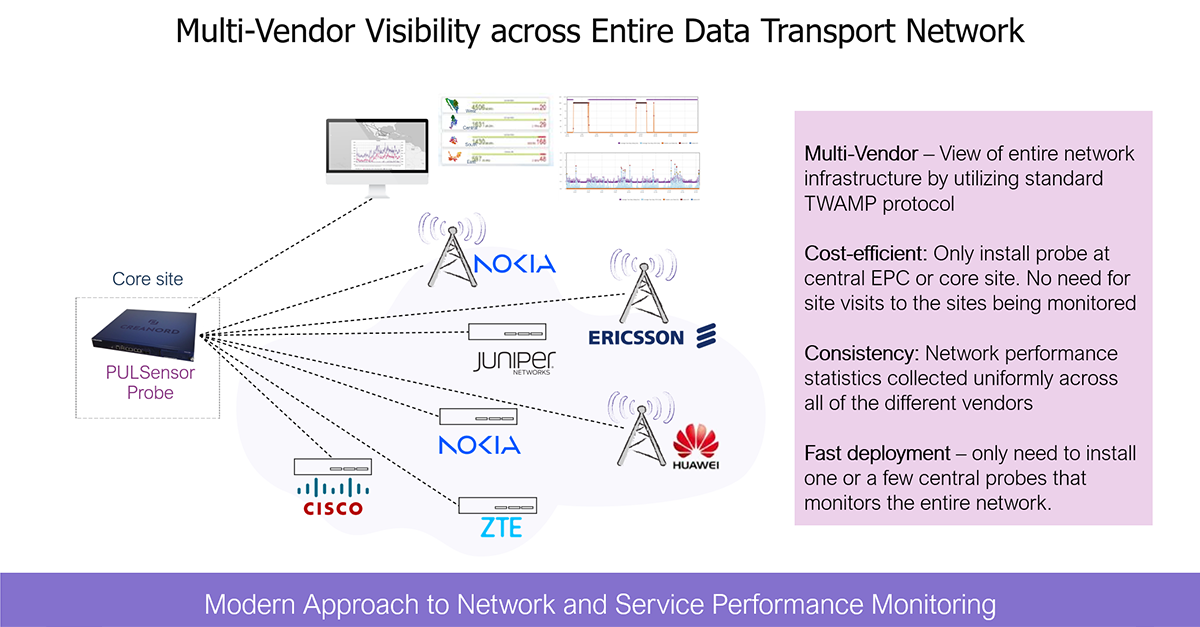Proactive Network Management with TWAMP: Taming the Micro-burst Monster

Today’s data networks are a battleground. The explosion of video on the networks has created a surge in traffic, leading to unpredictable micro-bursts that can seriously impact the network’s performance. These short, intense bursts of data can overwhelm network devices, leading to packet loss, latency, and ultimately, a poor user experience, particularly for real-time services like video conferencing, gaming or voice-over IP calls. Traditional monitoring methods like SNMP monitoring fall short in detecting these short events as they are looking at averages over several minutes, but the microbursts last for only a fraction of a second.
What if you could proactively identify and address these congestion points before they impact your customers? The answer is TWAMP (Two-Way Active Measurement Protocol), a powerful tool for proactive network management.
The Micro-burst Challenge
Micro-bursts are like mini-tsunamis in your network. They occur when a large amount of data floods a link in a very short period. While the average utilization of the link might appear normal, these bursts can overwhelm buffers, leading to packet drops and increased latency. This is particularly problematic for real-time applications, which are highly sensitive to these disruptions. The result? Buffering, jitter, and unhappy customers.
But where do these micro-bursts originate from? The main culprit is video streaming. Video is distributed by chopping the video into a sequence of a few seconds long video clips. Every few seconds a new clip is served to the customer causing a burst of traffic as the clip is downloaded to the client. When you combine multiple streams from clients, you get a very choppy traffic profile on the transport links in your network, refer to the below examples.

Figure 1 Examples of Microbursts on Transport Links
TWAMP to the Rescue
TWAMP offers a more granular and proactive approach to network monitoring. TWAMP actively injects test packets into the network and measures the round-trip delay, packet loss, and jitter towards all the devices in the network. All major vendors currently support TWAMP reflectors in their devices, so it is possible to form a multi-vendor view using TWAMP as the monitoring protocol. This multi-vendor, active testing allows you to:
- Identify congestion hotspots: As you can monitor most third-party devices with TWAMP, you can configure TWAMP test points throughout your network, allowing you to pinpoint links experiencing high latency and packet loss, indicative of congestion.
- Detect micro-burst impacts: TWAMP is designed for high-frequency testing, typically sending out packets at 10 packets per second per target to capture the effects of micro-bursts on network performance, even if the bursts themselves are short-lived.
- Proactively address issues: Instead of reacting to customer complaints, you can use TWAMP data to identify and address congestion points before they impact users. Micro-bursts and sites that are becoming congested can be detected long before the average user experience for all users is affected.
- Optimize network resources and investments: By understanding traffic patterns and congestion points, you can optimize network routing and resource allocation for improved performance. It also helps you to plan for the future by investing in locations in the network where it matters the most.
 Understand TWAMP Protocol, read this article:
Understand TWAMP Protocol, read this article:
Implementing TWAMP for Proactive Monitoring
It is, in fact, very cost-effective to implement TWAMP proactive monitoring in your network. All you need is a few probes at central locations that will generate the TWAMP packets to collect the results and then you need to enable the TWAMP responders on your network devices to reflect the packets back. The probes collect the data and forward it to a central server for advanced data analytics and AI/ML methods applied to the data to identify trends, anomalies, and potential congestion points. Furthermore, alerts can be configured to automatically notify you when key performance metrics excel predefined thresholds, allowing you to take proactive action.

Figure 2 Example of Multi-Vendor monitoring
 Get advanced with TWAMP Monitoring, check this out:
Get advanced with TWAMP Monitoring, check this out:
Benefits of Proactive Monitoring with TWAMP
Implementing a proactive monitoring strategy based on TWAMP in your data network provides you with several benefits:
- Improved user experience: By proactively addressing congestion, you can ensure a smooth and consistent experience for your users across the entire network.
- Reduced downtime: Early detection of network issues with machine-aided root-cause analysis minimizes the impact of outages and disruptions.
- Increased network efficiency and return of investment: Optimized resource allocation and routing combined with targeted investments improves overall network performance and minimizes unnecessary investments into the network.
- Enhanced customer satisfaction: Proactive problem-solving leads to happier customers and reduced churn.
Conclusion
In today’s dynamic network environment, proactive monitoring is essential for maintaining optimal performance. TWAMP provides a powerful tool for identifying and addressing congestion points before they impact your users and optimizes your investments in the network. By embracing TWAMP and its active testing capabilities, you can tame the micro-burst monster and ensure a seamless experience for your customers, even in the face of ever-increasing traffic demands. Don’t wait for problems to arise; proactively address them with TWAMP and keep your network running smoothly.
Get a grip on your network performance monitoring